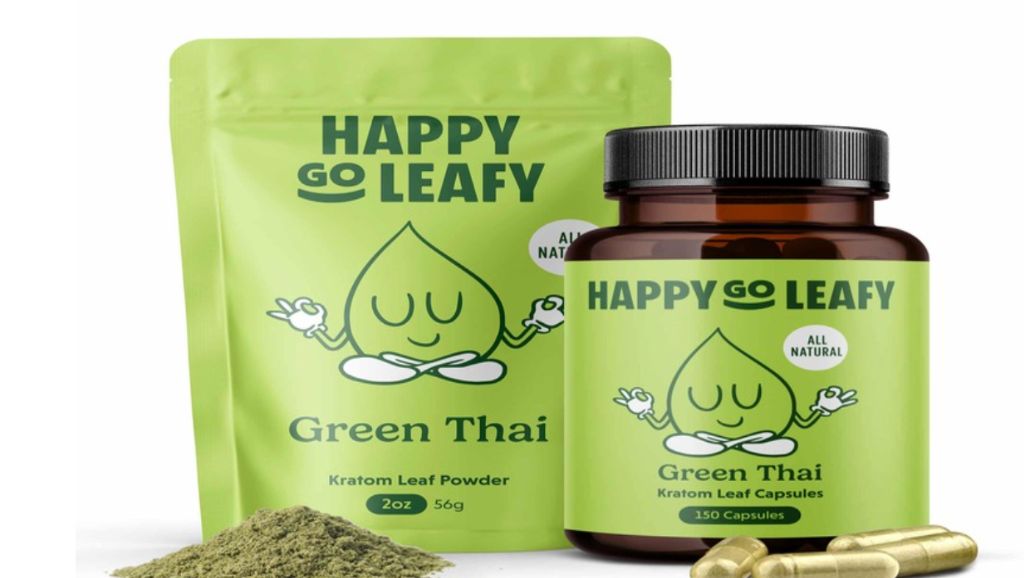Is kratom helpful for pain relief?
Prague Morning

Many individuals are turning to kratom as an alternative pain management solution. In this blog, we’ll explore the question: Can kratom truly be beneficial for pain relief? By taking a closer look at its historical use, examining its potential benefits, and considering current research findings.
We aim to provide a clear understanding of kratom and its role in addressing pain. Join us on this journey as we navigate the landscape of kratom and its potential impact on easing pain-related challenges.
What Is Kratom?
Kratom is a natural herb gaining popularity for its diverse uses, including pain relief, energy boost, and relaxation. Derived from the leaves of a Southeast Asian tree, it has a long history in traditional medicine. People purchase kratom for various reasons.
Kratom contains alkaloids that interact with our body’s receptors, producing different effects based on the strain. Users often consume it as a powder or in capsules.
It’s crucial to approach kratom with caution, as its effects can vary, and excessive use may lead to adverse reactions. Understanding its origins, types, and potential benefits is essential for those exploring this herbal supplement.
Does Kratom Help With Pain?
Some believe kratom to help with pain relief. Its leaves contain compounds that may interact with the body’s receptors, potentially offering relief. People often use it as a natural alternative for managing various types of discomfort.
However, it’s essential to approach kratom cautiously, understanding that its effectiveness can vary from person to person. While some report positive experiences, more research is needed to appreciate its pain-relieving properties fully.
Anyone considering kratom for pain management should consult healthcare professionals and be aware of potential risks and side effects.
How to Consume Kratom for Pain Relief?
For those exploring kratom for pain relief, there are simple ways to consume it. Common methods include mixing kratom powder with water or juice, making it into tea, or taking it in capsule form. It’s important to start with a low dosage and gradually adjust based on individual response.
Some prefer to take it on an empty stomach for quicker effects. However, it’s important to note that kratom’s impact can vary, and users should be mindful of their bodies’ reactions. Consulting with healthcare professionals and staying informed about responsible use is key to a positive experience.
How Does Kratom Work For Pain?
Kratom may help with pain by interacting with the body’s receptors. The leaves of the Southeast Asian tree contain compounds, including alkaloids, that can influence how we perceive pain. These compounds attach to receptors in the brain, affecting the pain signals.
It’s like a natural way of dialing down the discomfort. However, it’s essential to note that the effectiveness varies among individuals. Starting with a small dose and being mindful of personal reactions is key.
While some find relief, it’s crucial to approach kratom use responsibly, consulting with healthcare professionals and being aware of potential risks.
Benefits of kratom for Pain Relief
Here are more potential benefits of Kratom for pain relief:
Natural Analgesic Properties: Kratom’s alkaloids, such as mitragynine and 7-hydroxy mitragynine, interact with brain receptors to potentially relieve pain.
Anti-Inflammatory Effects: Some users report that Kratom may have anti-inflammatory properties, which could contribute to its effectiveness in managing pain associated with inflammation.
Boost in Mood and Well-Being: Beyond pain relief, Kratom is thought to have mood-enhancing effects. Users often report experiencing an uplifting mood, which can positively impact their well-being.
Increased Energy Levels: Certain Kratom strains, especially those with green veins, are known for their energizing effects. This boost in energy may contribute to an improved ability to cope with pain.
Improved Sleep Quality: Chronic pain often interferes with sleep. Some users claim that Kratom helps them relax, promoting better sleep quality and aiding in the overall management of pain.
Reduce Opioid Dependency: Some individuals exploring natural alternatives turn to Kratom as a potential way to reduce dependency on traditional opioid medications for pain management.
What is the Duration of Kratom for Pain Relief?
The duration varies based on factors like strain and dosage. Typically, users report feeling effects within 15-30 minutes, lasting around 3-6 hours. Reds are often chosen for longer relief, while whites offer a shorter boost. It’s crucial to start with a low dose, gradually adjusting.
However, individual responses differ, and consistency may depend on personal factors. Always consult with a healthcare professional and be mindful of your body’s signals when exploring Kratom for pain relief.
Is Kratom Safe for Pain Relief?
Kratom is generally safe when used responsibly. Users report positive experiences, citing its natural analgesic properties. However, caution is crucial. Excessive use may lead to dependence, and individual responses vary.
Pregnant individuals and those with health conditions should consult a healthcare professional. Considering the legal landscape is essential, as regulations vary.
Start with a low dose, be mindful of your body’s signals, and prioritize your well-being when exploring best kratom for pain relief. Always seek professional advice and use it responsibly.
The Legal Status of Kratom
Understanding the legal status of Kratom is vital. Laws differ globally, with some countries embracing its use while others impose restrictions. In the United States, it’s legal on a federal level, but states may have varying regulations.
Stay informed about your local laws to ensure responsible use. Globally, the situation is dynamic, requiring vigilance. Check local regulations before incorporating Kratom into your routine.
Being aware of the legal landscape ensures a safe and compliant exploration of Kratom’s potential benefits, promoting a balanced and informed approach to its use.
Conclusion
In the exploration of whether Kratom helps with pain, it’s clear that it holds promise. Users share positive experiences, emphasizing its natural analgesic properties. However, caution is essential.
Understanding the legal landscape, potential risks, and varied individual responses is key. Kratom presents an alternative for those seeking natural pain relief, but responsible use and informed decisions are crucial.
By staying well-informed, consulting with healthcare professionals, and being mindful of individual differences, individuals can navigate the landscape of Kratom for pain management responsibly and effectively.
-
NEWSLETTER
Subscribe for our daily news









